 The Prairie Club (Pines)
The Prairie Club (Pines) Valentine, Nebraska, United States
Architect: Graham Marsh (2010)
7,403 Yards, Par-73
Rating/Slope: 75.1/133
My Quick Review: Though the Pines Course has perhaps the best few holes on the property, its overall quality is no comparison to the vastly superior Dunes Course.
General Thoughts:
1) Pines is nowhere near the calibre of golf course as the Dunes. Using the GCA-style of splitting 10 rounds, I would likely play 8 on the Dunes and 2 on the Pines.
2) The options off the tee at the Dunes are not present on the Pines. There is certainly width in many fairways but there is often only one place that makes sense to hit a tee shot.
3) The greens are much smaller than the Dunes (but still much bigger than an average golf course) and many have very severe internal contouring making some of the green feel like several greens in one.
4) The routing is quite good. There are only two awkward walks and the course is constantly changing directions (except for the stretch from 12-16, which played straight into the wind when I played).
5) There are too many uninteresting holes (in my opinion) for this course to be considered anything more than just OK or good.
I played the course twice from two sets of tees, both par 73: The black tees (7403 yards, 75.1/133) and the white tees (6825 yards, 72.4/127).
Yardages will be from the black tees unless otherwise noted.

Hole 1: Par 4, 419 Yards
A rather tame opening hole to ease you into the round. There is tremendous width on this hole as the bunkers on the left are unreachable
by most (the hole usually plays into the wind). Keep the ball somewhere out of the tall grass off the tee.

The approach is basically the same from all angles. A very large green with no fronting hazards and lots of room to miss (short, left, long, right are OK) to accept would should be a long-iron or hybrid if the wind is blowing.


The green is very big and largely circular in shape. It is very tame by Pines standards with only a single large ridge bisecting the green into two halves (left and right). Hit the ball on the correct half of the green and you will have a straightforward putt.



Hole 2: Par 5, 548 Yards
Easily the best par 5 on the Pines course. This hole has all the options off the tee that make the Dunes so good.
There is a prominent centerline bunker. Lay it up short of the centerline, try to carry it, play left or play right. All options make sense.
Short leaves the most difficult and blind layup but has no danger on the tee shot.
Left leaves a poorer angle than right but is less likely to be blind and leaves the shortest approach
Right is semi-blind and longer but the best angle
Over is really the best option but you need the right wind conditions to make this possible.
Black tee

White tee (about 490 yards)

From right of centerline (some view of green from here)

From left of the centerline the green is fully in view but a lay-up or an attempt at the green in two will have to carry all of the fairway bunkers.

If you carry the centerline bunkers you will kick hard forward leaving a 200 yard approach that should look like this:
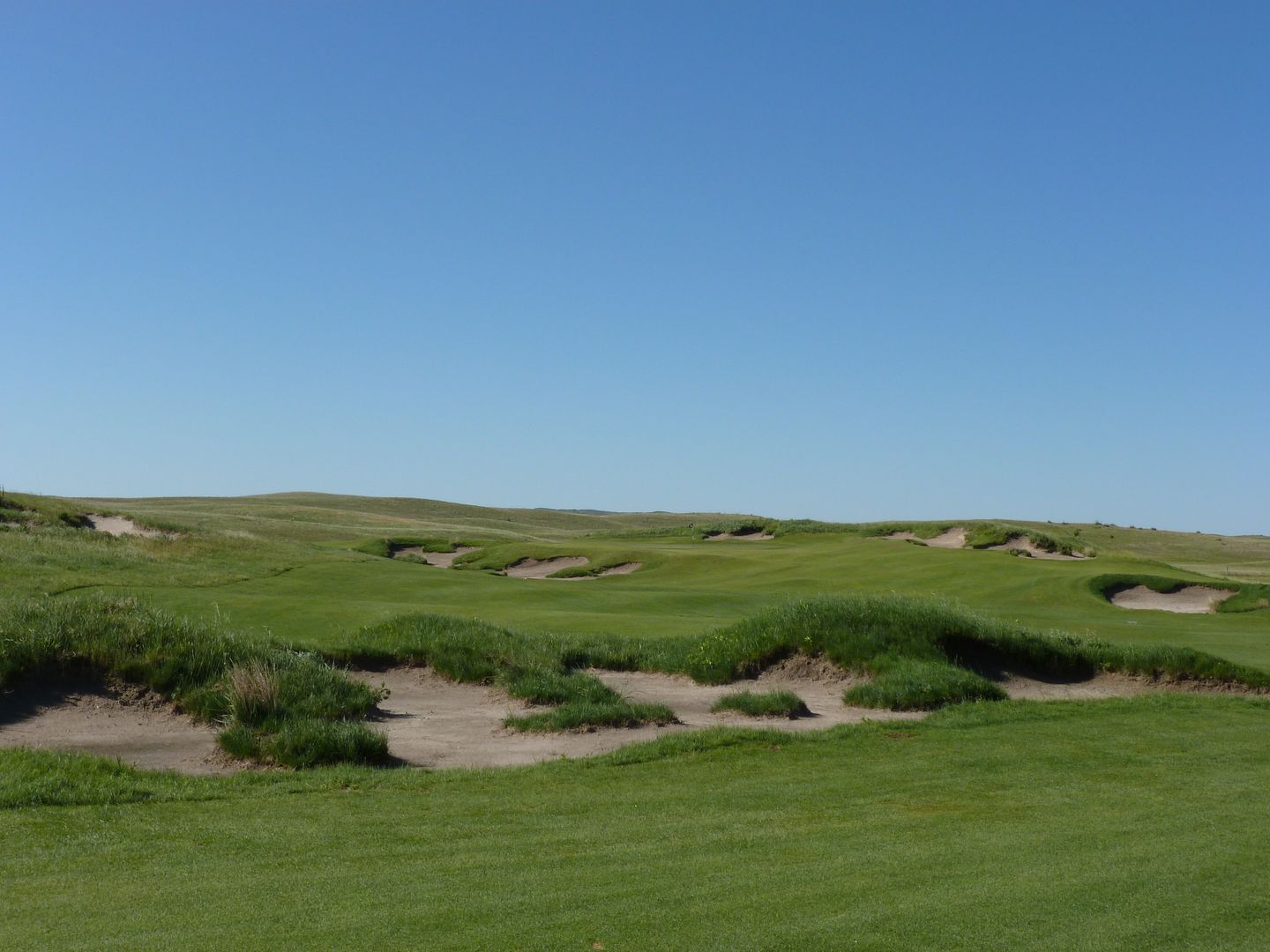
Shots that are successfully layed up with have an approach from about 100 yards that looks like this:

Green is at a diagonal to the approach for someone going for it in two, but third shots can take advantage of the full width of the green.
A single large hump protects front/right pin positions.

A very difficult back-left pin position is available, though there are some slopes that will keep good shots from running over the green.

Hole 3: Par 3, 168 Yards
The first of two very strong one-shotters on the front nine of the Pines. Though short on the scorecard this hole plays into the prevailing wind and when it's blowing is one difficult hole.
Hole 3 features a very wide green and is one of the few holes where the ground game is not an option. Tee shots at the left bunker will catch a subtle ridge that will bring the ball all the way down to the left fringe.

The bunkers are actually farther short of the green than they appear from the tee allowing shots to run onto the green. BUT, significant contouring means that shots landing short are very subject to chance and could kick into the front-left bunker.

The third green has more tilt than contour (though there a couple of humps and bumps to be found on the green). The left side of the green gently slopes to the left and the right slide slopes to the right. Off the tee you really want to find the right half of the green or you will have a very difficult uphill then downhill putt.
Left edge of green:

Right edge of green:

Hole 4: Par 4, 434 Yards - Yardage from white tee
This hole played straight into the wind both times I played. I wonder if this is the prevailing wind as there is a significant carry to reach the fairway from the back tee - one I could not make into a three-club wind. I took the Ballyneal approach and picked a different tee for the hole.
Playing straight into the wind, few players will have less than hybrid into this green. Off the tee the goal is to find the short grass. Those striking it well will attempt to skirt the left fairway bunker.
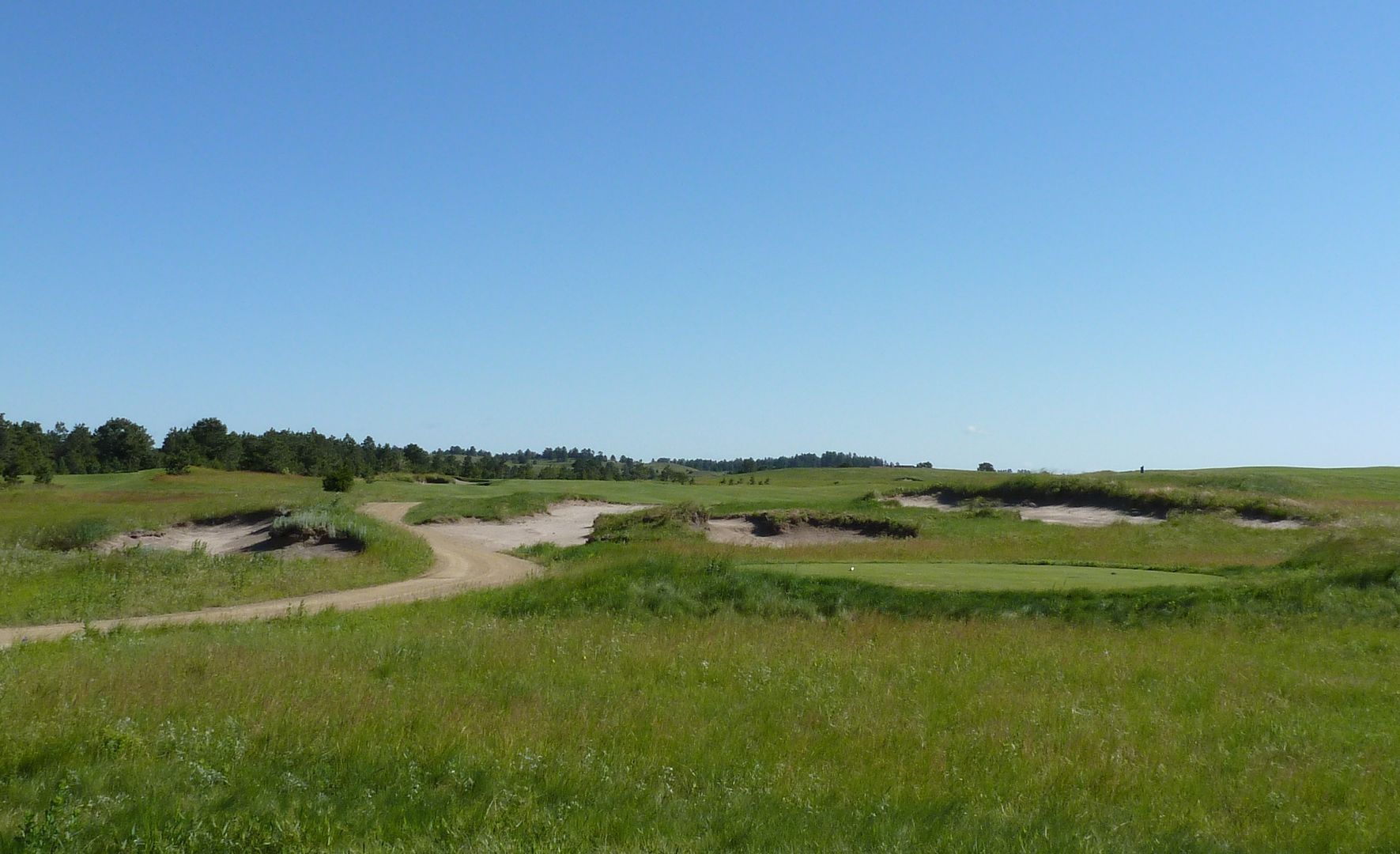
From the centre of the fairway, one must deal with a series of three bunkers than run diagonally between 50 and 100 yards short of the green. I didn't like these bunkers. I felt they would penalize the high handicapper (in their lay-up/fairway wood landing area) while having little effect on the low handicapper (can carry them with ease).

Tee shots that flirt with the left bunker off the tee will have a clearer look at the green.

The green has plenty of run-off areas (aka room to miss) in all directions.

Hole 5: Par 4, 416 Yards
Very few visual clues off the tee. Take it as far right as you dare (it is not that long a carry), but the easier approach is from the left. Long hitters can aim well right and be left with 100 yards or less into the green

A tee shot that is hit about 200 yards from the white tee will leave this view. The green is almost entirely blind with only half of the flagstick being visible. There is also some contouring short/right of the green from this angle which will kick shots that land short of the green over the green.

A perfect tee shot leaves this view from about 140 yards out.

There is some serious contouring, forming something of a bowl, on the right portion of the green. Interesting that the contouring is placed on the right and there is no doubt there is the more difficult half of the green to find from the fairway.

The bowl itself is rather severe. Most approach shots that are long enough to get into the bowl will end up rolling off the back of the green into the fringe (though this is preferred to having to putt/chip into the bowl from short of the green).
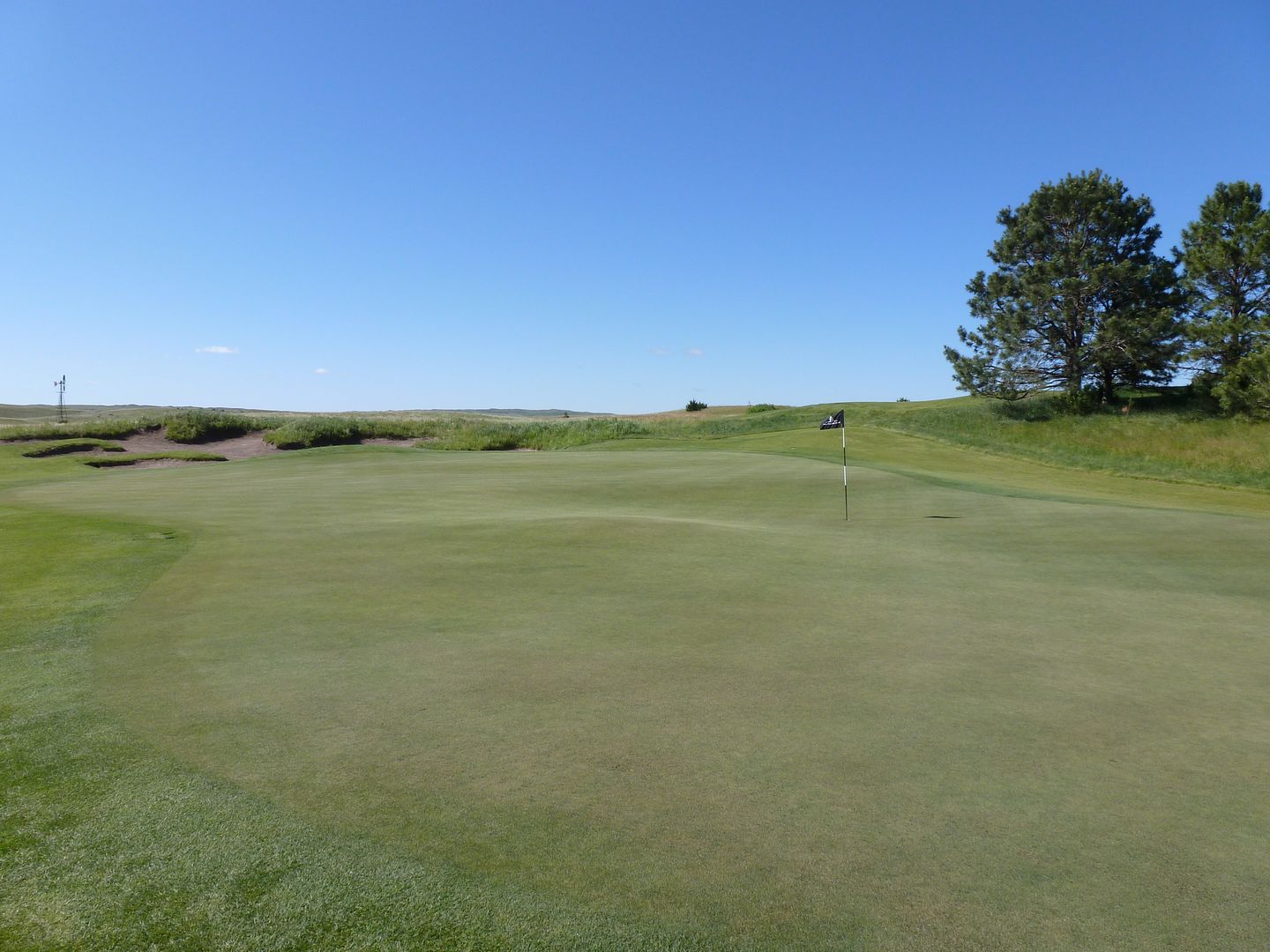
Hole 6: Par 3, 159 Yards
An awesome par 3 that felt inspiring by 16 at Pasatiempo in both the shape and undulation of the green. The green is huge and is nothing more than a short-iron, but finding the right portion of the green will require a good combination of luck and skill. Undulations on the green are large and numerous and only a player that knows the course very well will be able to accurately predict how his ball will bounce.
Black Tee

White Tee

From short-right approaching the green - front pins are treacherous with a massive false-front and deep bunkering. Also there is much more room over the left bunkers than appears from the tee.

From front-right
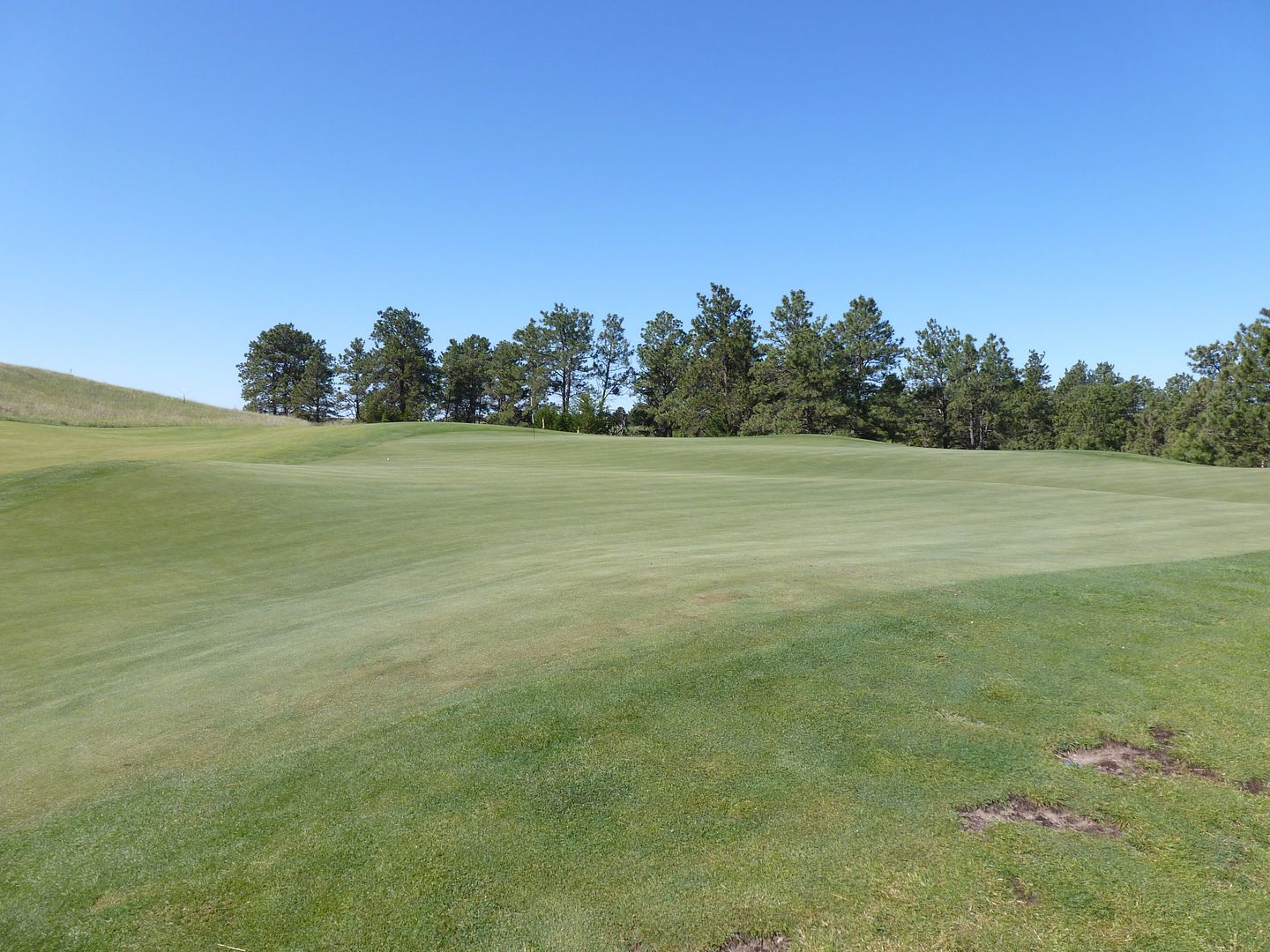
From left
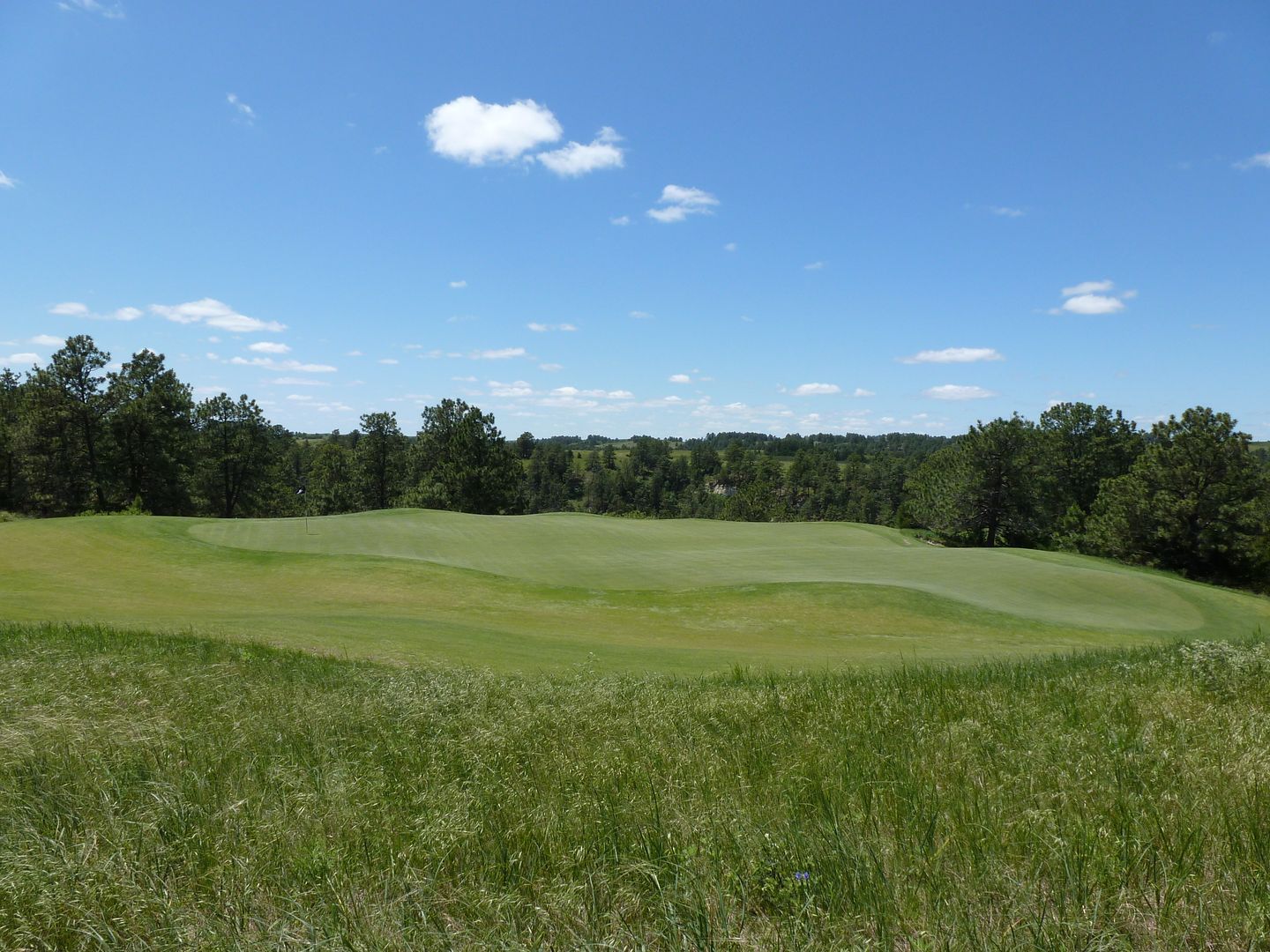
Running through the centre of the green is a deep swale

From back-left edge of green - several tiers are obvious

Shots long are dead. I was surprised at the shape of the run-off over the green as shots that are just a little long will accelerate until they find the tall grass.

Hole 7: Par 5, 616 Yards
A long par 5 that is way better from the tips than the whites. The fairway bunkering is clearly designed with the black tee in mind. All of the fairway bunkers in view from the whites are easily carryable (less than 175 yards) and not in play. The tee shot from the whites feels forced and awkward. Smart players will simply lay-up off the tee, trying to hit it about 215 yards before the fairway narrows. If you want to hit driver, it will be to a blind area over the left bunker where the fairway narrows (I don't think it should - try to encourage aggressive play here).
From the black tee all of the bunkers are very in play and one does not need to worry about running out of fairway.
Black Tee


White Tee (530 Yards)

The second shot is almost completely blind. Fortunately, there is lots of room and nothing surprising over the hill.

Once over the hill you find a large fairway that slopes hard down and left to right. Really a simple lay-up to setup a fairly simple third.

From left of green

From behind green - Notice the bunker that is completely hidden from the fairway but visible from behind the green. No doubt some players that find this bunker will call it unfair. Maybe it is, but I liked it. I felt it kept players honest on the lay-up. Don't just bust 3-wood down the right or you may just trickle into this bunker (anything with any speed will run right over it). The lay-up was simple. This gives players a little something to think about.


Hole 8: Par 4, 462 Yards
The first of two parallel holes. This one, a long par 4, generally plays downwind. The next, a short 4, plays into a headwind.
The tee shot is semi-blind and must avoid a large set of bunkers to the right. Downwind these are easily carry-able, providing plenty of width off the tee, though an approach from the left is clearly preferred. However, significant mounding down the left makes it difficult to keep the ball from rolling down to the right side of the fairway.
Black tee

White tee (429 yards)

From beginning of fairway the bunkering is more easily seen:

The approach from the middle of the fairway is uphill but the pin is clearly in view

Tee shots that bail right have this view: The pin is basically right over the middle of the bunker.

Another very undulating green given the length of the hole.

8 has one of the largest collection areas I have ever seen over the green. It is flat and recoveries from this area are fairly simple. Shots will be coming into this green very 'hot' being uphill and downwind and I suppose anything less than this could be deemed unfair.
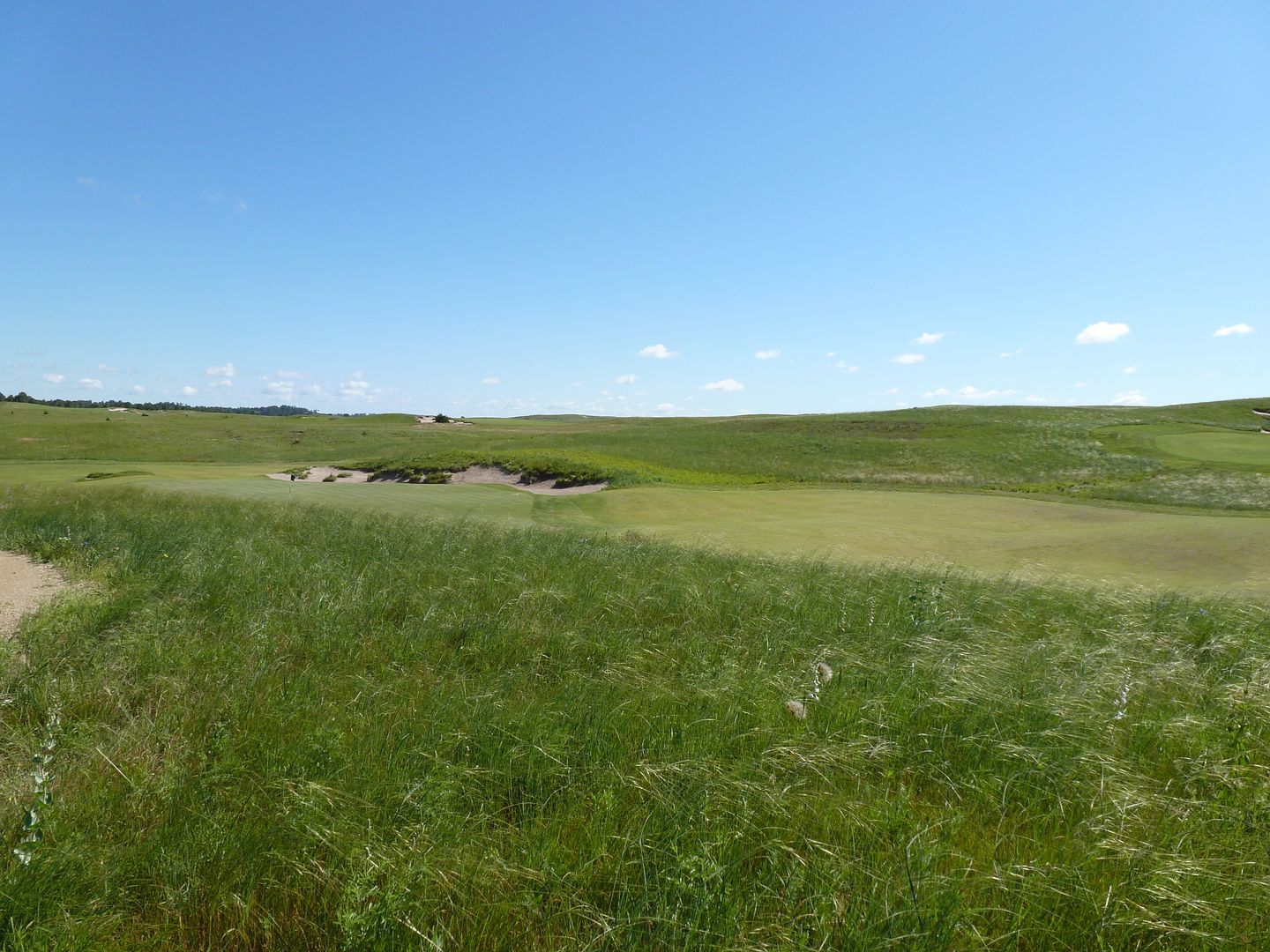
Hole 9: Par 4, 314 Yards
A short 4 with one of the most demanding greens you will find anywhere.
The hole plays under 300 yards from all sets of tees but the blacks but the decision from the tee will be dictated by wind direction. Downhill and downwind the green is reachable by just about everyone. Playing into the wind, driver or 3W is required just to leave a short-iron into the green - and believe me, you don't want to be hitting more than short iron into this green.
There are bunkers left and right off the tee, but most are unreachable into the wind (and are easily carry-able downwind). There is also tons of fairway right as 9 shares a fairway with the parallel 8th.
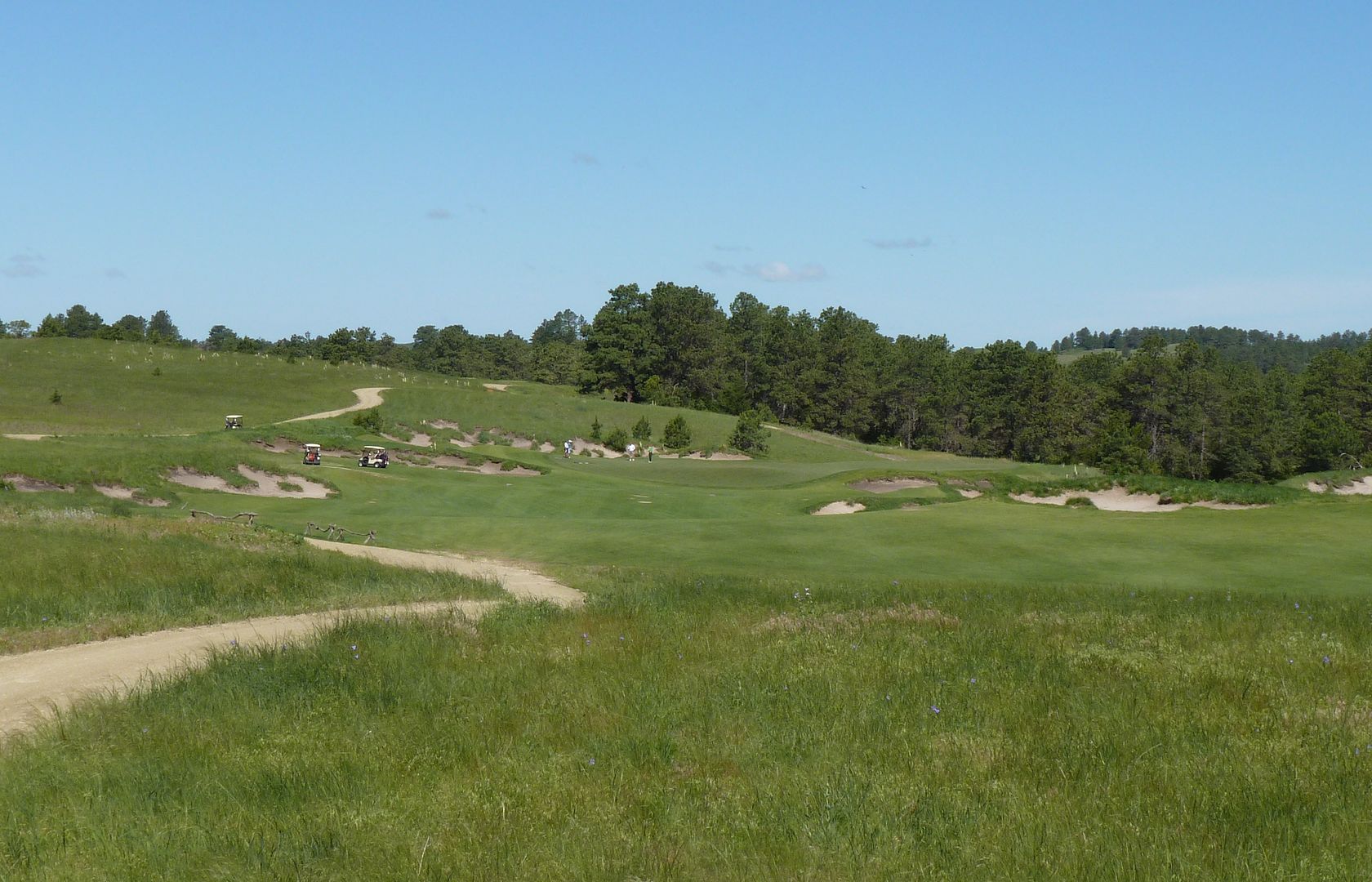

Approach from 125
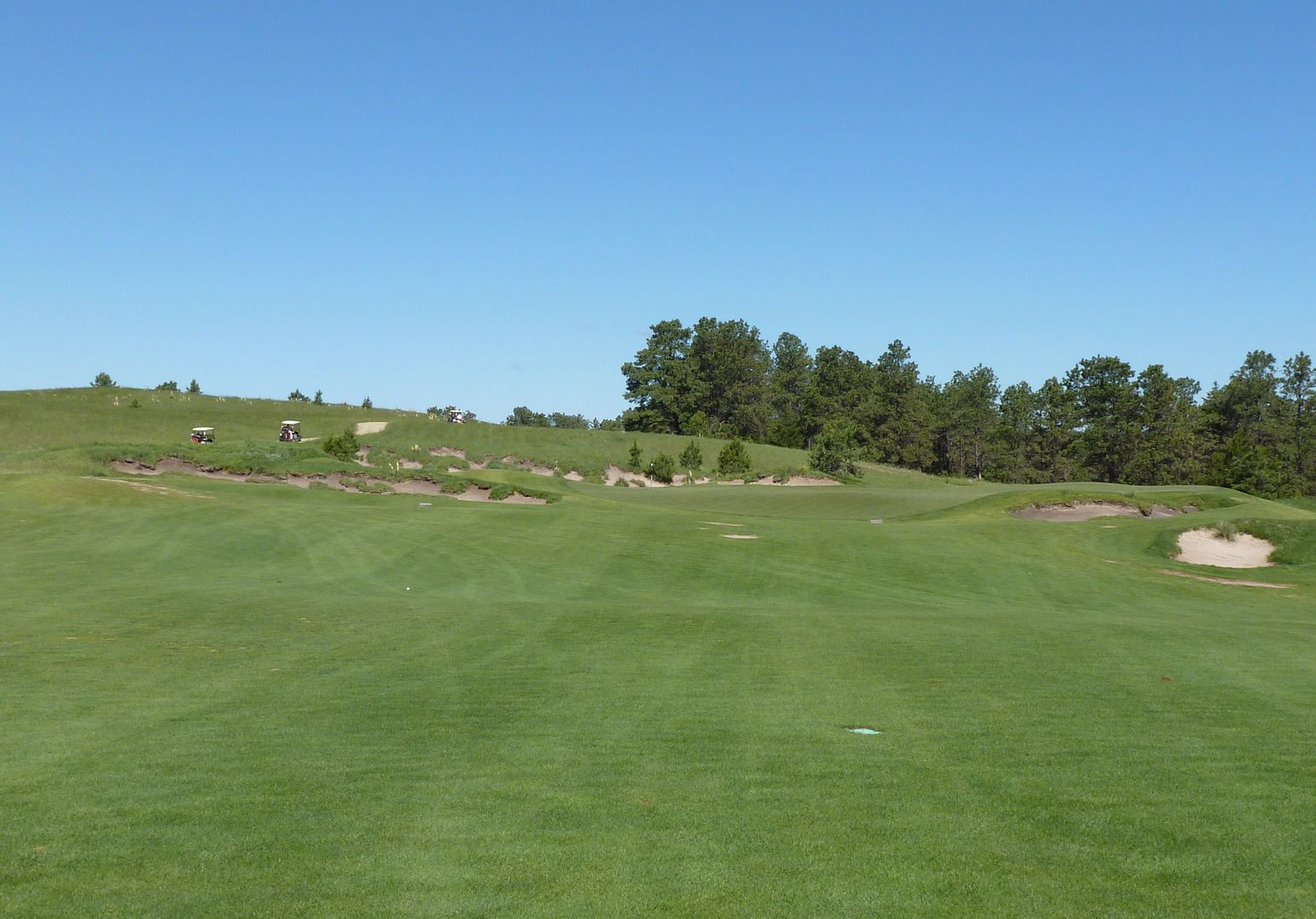
Approach from 75

This hole is all about the green. Very shallow and very wide, you really have to get your distance right. Straight downwind or into the wind, getting the distance right is no easy task.
Pins on the left half of the green have to contend with a massive false front. They also have to deal with a green that runs sharply away once over the false front. I bet only a small percentage of players actually hit the green in regulation, even with a wedge in their hands. Shots that go just a little long will be caught by a deep collection area. From there the recovery is all but impossible as shots short will roll back to the player's feet and shots long will roll off the front of the green via the false front.
Right pins have a whole different set of difficulties. The green is much deeper here, but the penalty for missing the green is arguably greater. The front-right bunker is very, very deep. Worse, the area over the green on the right is death. Shots just a couple of yards long will tumble 30+ yards over the green into a deep collection area with random mounding to make recovery shots impossible.
I understand that this is a short par 4 with the green as the defense, but I have to wonder if the architects went a bit too far with this one given the windy conditions at TPC.
The false front

From left

From right

Hole 10: Par 3, 174 Yards
This straightforward P3 sets the tone for a less interesting homeward 9. Playing downhill to a smallish green (by TPC standards), there isn't a whole lot happening here.
There is green to the left of the mound and left of that is a run-off, but it is covered in rough(!). This was a first at TPC and will stop balls from getting too far off-line. The next few holes (as well as 16-17) have a distinctively parkland feel (hence "Pines") and I guess the rough adds to this.
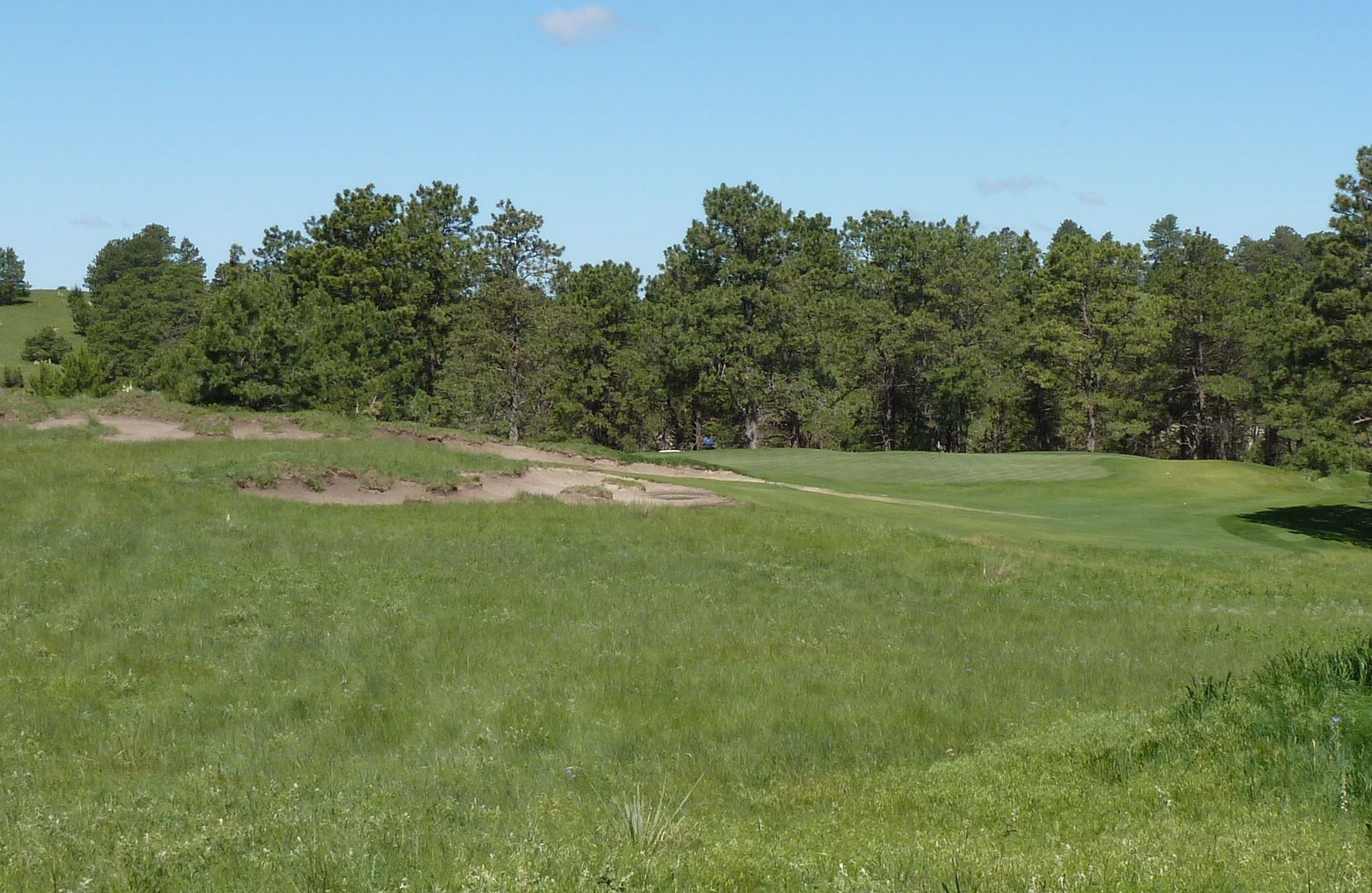
The green is difficult. Right pins have to deal with a ridge the bisects the green down the middle as well as two large swales. Left pins are on a very flat piece of green.

Hole 11: Par 5, 602 Yards
Someone wrote on another thread that they heard a course was boring so they were probably going to like it. Well that person will like this hole as well.
The tee shot is blind and there is a bunker (or two?) down the left. The fairway is flanked by tall trees (pines?), but overall there isn't much happening on the tee shot.

The second is best from the left, but from anywhere in the fairway you can lay-up to a good spot. The trees on the left are farther than they look and you can get the ball to about 100 yards out by aiming just left of where the treeline ends.

The green is split into three section with putts within each section being fairly flat but putts from one section to another being very difficult.

Hole 12: Par 4, 461 Yards
So I have no idea what happened to my pictures of 12. This might be the narrowest tee shot on either course at TPC. Trees left and bunkers right mean you really need to hit your target on this one.
The hole doglegs sharply left from the DZ. The approach is among the most straightforward as there is but a single large bunker on the left and open area to bailout right.
Tee view

Hole 13: Par 4, 413 Yards
One of my favorite holes on the Pines. The line of charm on the tee shot makes you want to take as much off left as you can, but a wide fairway is available to the right. There is no need to challenge the bunkers as an approach from anywhere but the right bunkers or right edge of the fairway is just fine.
Black Tee

White Tee (381 Yards)

The approach is uphill and fairly open to a green that appears to be in a large bowl.
From 125 yards out

From 50 yards out

The bowl is not as defined as it looks from the fairway. Shots that miss the green will not kick onto the green but instead will funnel to the low points in the bowl. At best the shape of the bowl will stop errant shots from running into the long grass.


Hole 14: Par 4, 345 Yards
I think this hole is intended to play downwind, but both times I played it I got it into the wind. The carry to reach the fairway is about 200 yards. Shouldn't be a problem for a guy playing 7400 yards, but into a 3-club wind, it's a long way.
The fairway is split into an upper/lower sections. The upper section is on the left and is guarded by a bunker. This is the preferred placement off the tee. The lower fairway is wide open but leaves a more difficult approach.
Black Tee

White Tee (325 yards)

Approaches from the upper part of the fairway give a clear view of the green, but...

Approach from the right can see just a portion of the flag but provide a better line to a back-left pin. The fairway bunker in view will only effect strategy on downwind days.

The extent of the run-offs around the green suggest that the green was intended to be attacked with nothing more than a very short iron or even a chip/putt.
Just over the green balls will run 20+ yards off the green.

The most controversial feature of this hole is a bunker placed in the run-off right of the green. I presume that this shot was intended to catch tee shots going for the green rather than approaches missing the green, but I could be wrong. Shots that miss the green 1 yard right will roll all the way into the bunker. Recovery from there is all but impossible. This bunker is a recipe for a ball-in-pocket for most players. Bunker shot, uphill where anything at all short rolls back into the bunker and thin/long will find another run-off. Dare I use the word unfair again?
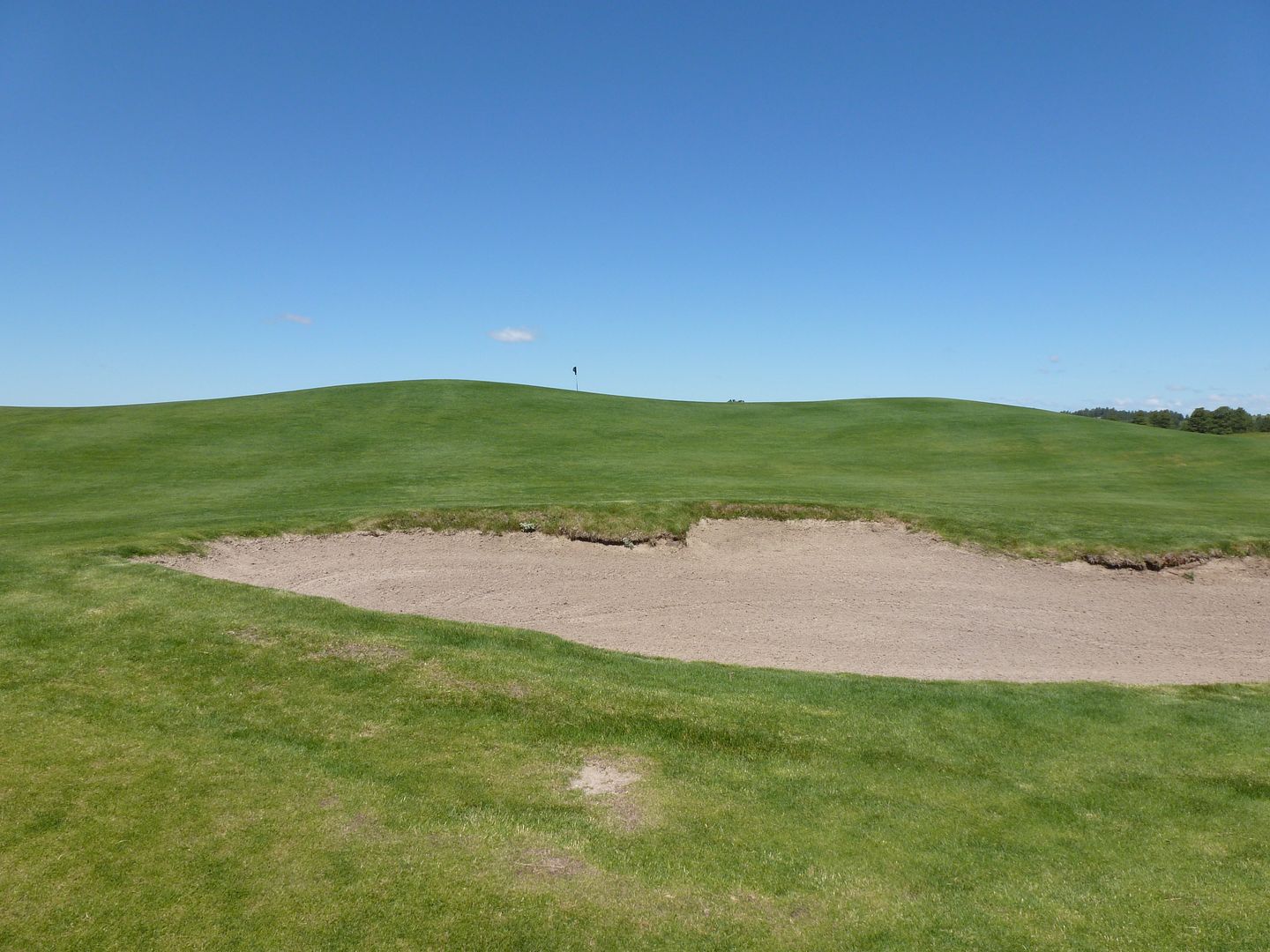
Nice tie-in to the next tee. If you get pissed off enough after your ball trundles down the run-off over the green, just grab your driver and play the next hole!

Hole 15: Par 5, 581 Yards
As wide a fairway as you will ever see, yet you are drawn to challenge the bunker on the right. Playing long, uphill and into the wind, the player really wants to leave as short a second as possible. Of course, the only place you can't miss is in that bunker or in the long grass right of it.

The preferred angle for the second shot is from the left.
Second shots from the right are blind because of the large bunker. The fairway snakes a bit to the right for the second shot meaning the bulk of the fairway is actually straight over the bunker.

Second from the left

Approach to the green cannot be missed long/left. The green runs off into pines directly over the green and shots left will find a steep run-off.

The run-off to the left:

Hole 16: Par 4, 460 Yards
Another hole in the stretch from 12-18 that plays in basically the same direction. The days I played it, these holes played into a headwind and by the time I got to the long 16th, I was getting pretty sick of it.
The tee shot is blind to a narrow-ish fairway - narrow enough that into the wind losing a ball in the long grass right or trees left is certainly an issue.

The preferred angle is from the right as this will allow an approach with a long club to use the contours short/right of the green. Approaches from the left must deal with a series of deep bunkers.
Approach from right

Approach from left

The view is really beautiful from this eternity green though the green is arguably too undulating for such a difficult hole.
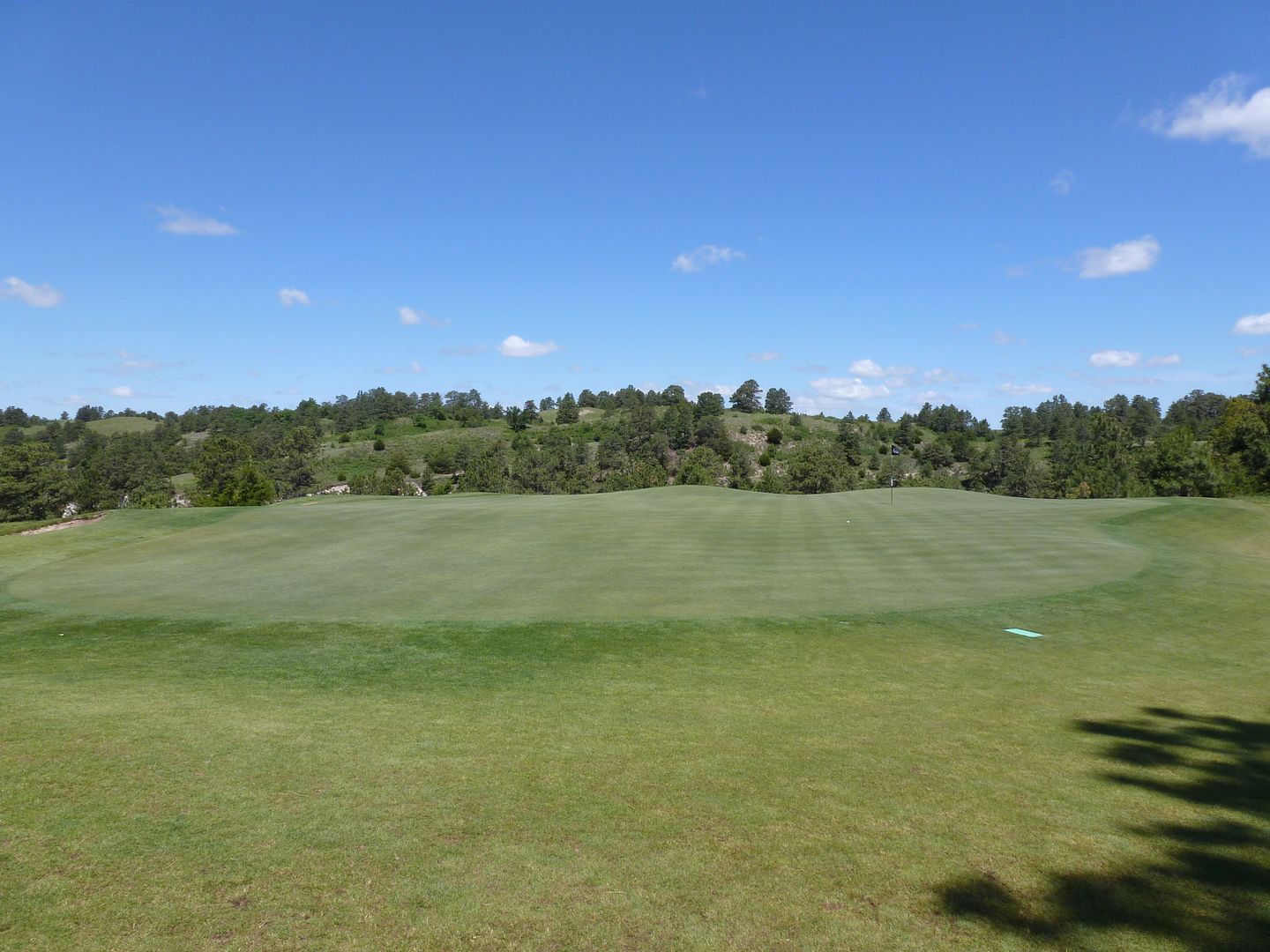
Hole 17: Par 3, 183 Yards
A pretty hole that need not be built in the Sand Hills. It is fairly straightforward with a difficult, undulating green that falls away into a river back-left of the green. Pictures of the green, unfortunately, are nowhere to be found.

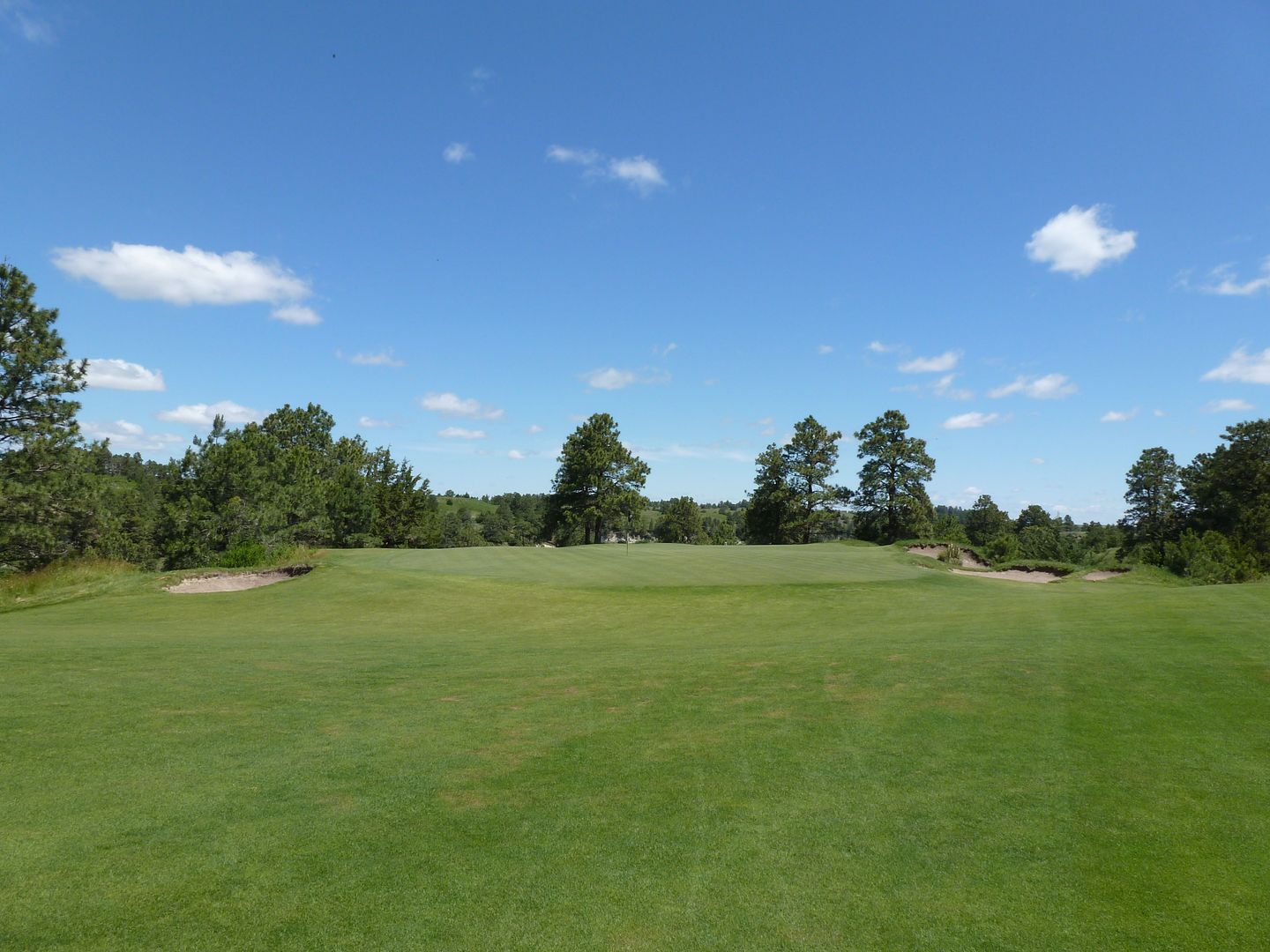
Hole 18: Par 5, 598 Yards
Hello OPTIONS! There are so many ways to play this hole that I literally stood in the middle of the fairway for 10 minutes trying to figure out which was best (don't worry, there was no one behind me).
First choice is from the tee:
If you look you're gonna go for it in two, challenge the tree on the left.
If you know you're gonna play it as a three-shotter, challenge the bunkers on the right
If you're like 90% of golfers and are happy just to have it in play, aim down the middle.
Black Tee

White Tee (550 yards)

The view from the second shot is very confusing. Having a yardage book is awfully helpful here. This picture is taken from ~300 yards out. From here you can:
- Go for it if you can carry it about 250
- Lay-up left in a cleverly cut-out chunk of fairway, leaving about 160 yards in
- Lay-up right
--Lay-up right and challenge bunkers close to left hazard
--lay-up right and don't challenge bunkers leaving long third / difficult angle to green.
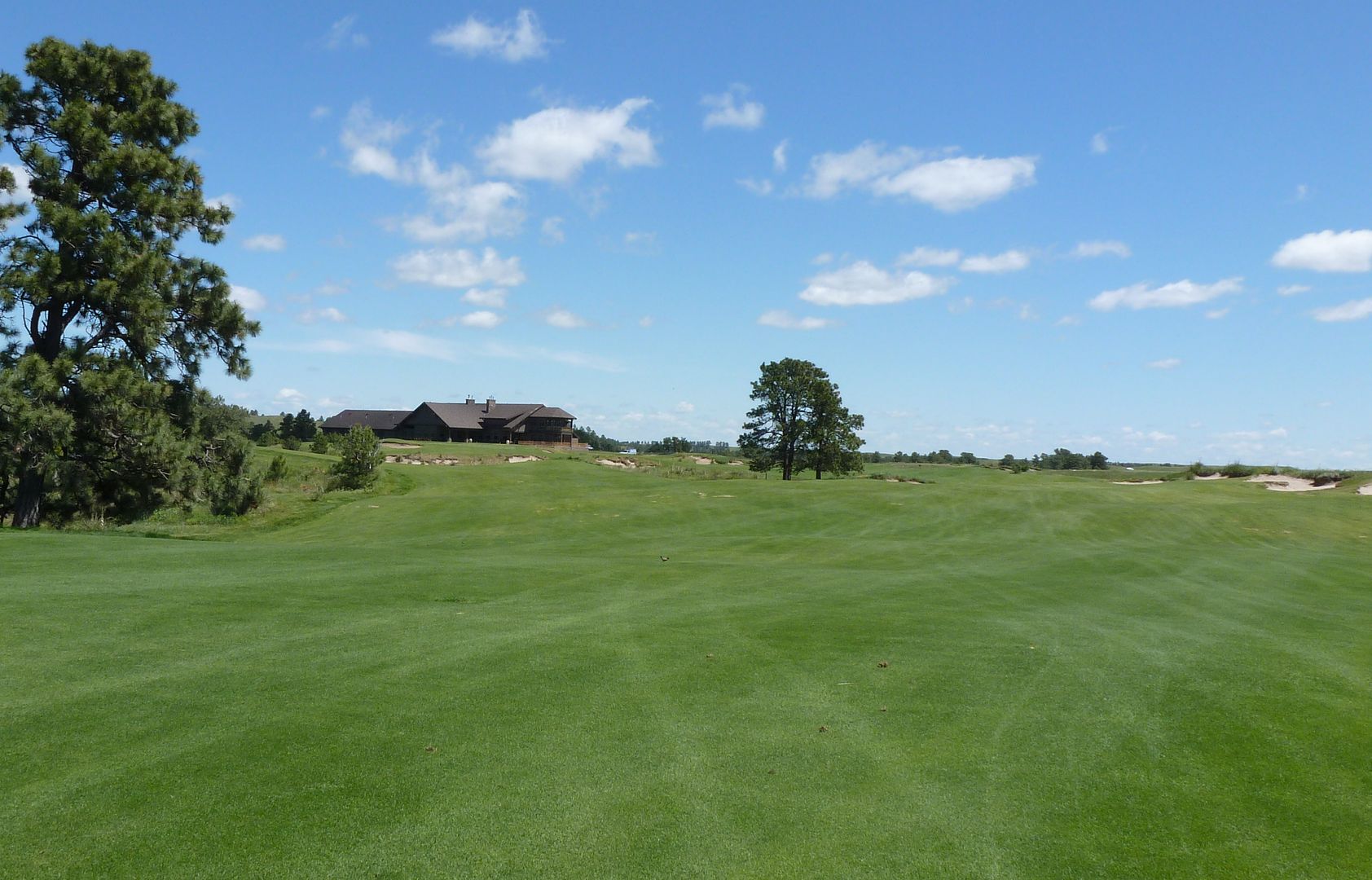
This picture is taken from ~240 yards out. The carry is now only about 200 yards at the green.

There is a portion of fairway cut-out on the left that allows a player to lay-up leaving a fairly long (160+) third, but the easiest angle into the green.

View from a perfectly laid-up shot to the right, leaving a difficult angle to back pins (the pin is difficult to see, but is just left of the deck-chairs).

One of the more subtle greens on the golf course.

And after your round, sit back, have a beer and listen to the sounds of the bagpiper who comes out each evening

No comments:
Post a Comment